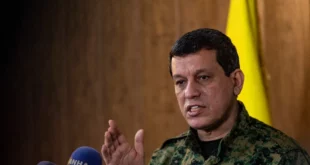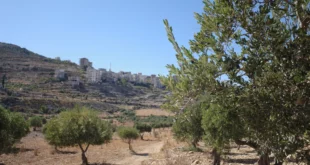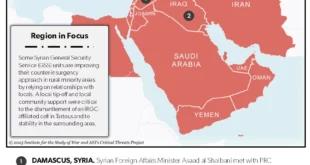Executive Summary
This report provides an analytical assessment of the North Caucasus Federal District (NCFD) based on developments presented at the Kavkaz Investment Forum 2025, recent macroeconomic data, and ongoing geopolitical dynamics.
This analysis evaluates investment prospects, pinpoint sector-specific opportunities, and assesses the wider strategic ramifications of current regional economic policies.
As the Kremlin works to attract investment and connect its southern region to trans-Eurasian networks, this report provides insights for commercial decisions and risk assessments for those involved.
Key Takeaways
The Kavkaz Investment Forum 2025 confirms the North Caucasus’ strategic importance in Russia’s foreign and domestic policies.
Key sectors such as agribusiness, tourism, and logistics continue to attract investor attention in the North Caucasus, underpinned by state-led incentives.
Security risks and foreign geopolitical competition remain material concerns, undermining long-term investor confidence.Background Information
The Severniy Kavkaz Federal’ny Okrug (North Caucasus Federal District – NCFD), established in 2010, has entered its fifteenth year amid government-led efforts to reposition it as a high-potential investment destination.
The Kavkaz Investment Forum 2025, held in Mineralnye Vody from 25 to 27 May, serves as a key vehicle for promoting regional projects and business initiatives. Organised by the Ministry of Economic Development and the Roscongress Foundation, the forum’s agenda highlights the region’s energy, logistics, tourism, agribusiness, and digital economy sectors.
The event focuses on raising living standards, supporting youth entrepreneurship, and increasing international cooperation, especially with countries in the Gulf and Indian Ocean basins.
Macroeconomic Overview
Strong federal engagement and capital inflows are driving a period of rapid economic expansion for the NCFD.
Gross Regional Product: Expanded by 40% over the past three years.
Capital Investment: Private sector participation significantly increased, resulting in a 75% rise over the same period.
Employment: The workforce has expanded to 4.5 million, with unemployment dropping to 8.1% from 16% in 2010.
Housing and Infrastructure: Local authorities have completed residential construction totalling over 72 million square meters in the past decade.
Investment Instruments: Protected capital investment agreements now exceed 200 billion rubles (US $2,5 million), demonstrating increased investor confidence.The data shows a significant commitment to regional development; however, access to basic services and infrastructure remains inadequate in less developed areas.
Sector-Specific Analysis
The local economy heavily relies on agriculture. Because the region excels at raising livestock, poultry, and produce, it attracts both domestic and international agribusiness investment. Investment in food processing and supply chain infrastructure is ongoing.
In 2010 the Kremlin launched the Kurorti Severnogo-Kavkaza (North Caucasus Resorts) Projects whose aim was to establish touristic structures capable of attracting domestic and foreign clients. Currently, tourism continues to expand, benefiting from seasonal and wellness offerings. The sector enjoyed a 12.8% increase in visitors in 2023, reaching 5.7 million, thanks to better hospitality and increased domestic travel. Russian and local authorities and the forum’s organisers expect more investment in resort development and improved transportation.
Transport and Logistics. The International North–South Transport Corridor (INSTC) remains a central element of regional development. INSTC’s goal is to lessen dependence on Western trade routes by improving connections with economies in the Persian Gulf and Indian Ocean regions. Logistics hubs and freight infrastructure are attracting increasing interest from both domestic and international stakeholders.
Energy and Digital. Growing interest in renewable energy and digital infrastructure shows a move toward diversification. Despite being in their early stages, these sectors show increasing investment potential, driven by sustainability targets and remote service provision.Geopolitical and Strategic Impact
As underlined during the Kavkaz Investment Forum 2025, the NCFD holds strategic relevance for the Russian Federation because of its geographic positioning, demographic profile, and role in foreign policy execution. Moscow uses it as a southern gateway to non-Western markets and increasingly promotes it as a logistical and diplomatic hub connecting Central Asia, the Middle East, and Africa. Infrastructure improvements and financial pilot programs, like Islamic banking in Chechnya and Dagestan, designed to attract Gulf investment, are major initiatives that strongly support this strategy.
However, the region also remains a geopolitical pressure point. The Kremlin’s centralised control continues to conflict with local desires for self-governance, increasing tensions in diverse republics. Ethnopolitical divisions in Dagestan, Ingushetia, and Kabardino-Balkaria pose a potential threat to regional stability if mishandled.
Security remains a critical issue. Although insurgent activity has decreased since the early 2010s, recent counterterrorism operations in 2025 have confirmed the continued existence of Islamist networks. Jihadist propaganda’s persistence, coupled with the return of foreign fighters, especially after events in Syria and Hayat Tahrir al-Sham’s rise, highlights the region’s susceptibility to transnational radical groups. These events undermine both local stability and the Kremlin’s claim of bringing peace and progress.
Turkey and Gulf states all externally influence the region, seeking to project soft power or commercial interests through minority populations or regional development channels. The Ukraine conflict has spurred the growth of non-Western alliances while simultaneously heightening the risk of the NCFD becoming a geopolitical battleground. Integrating the North Caucasus into the Eurasian logistics system offers economic advantages but also increases the region’s vulnerability to foreign influence.
Conclusion
The NCFD presents both an interesting investment case and a persistent security dilemma. Tourism, agriculture, and infrastructure are driving positive economic trends. The Kremlin’s push to attract Eurasian investment to the region fits its broader strategy of economic diversification. However, significant underlying problems persist. Instability within the region, identity politics, and foreign influence could all cause disruption.
Investors and policymakers must use a two-pronged strategy with the NCFD: exploiting sector-specific opportunities while remaining aware of the geopolitical and security landscape. Closely observing capital protection, local governance changes, and international involvement will be key to predicting regional stability and investment potential.
 Eurasia Press & News
Eurasia Press & News



